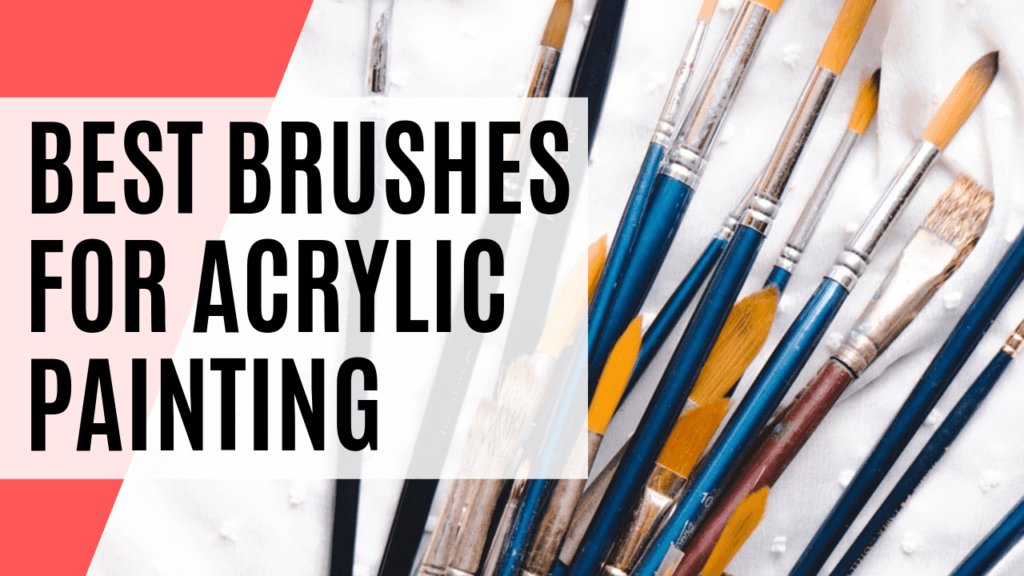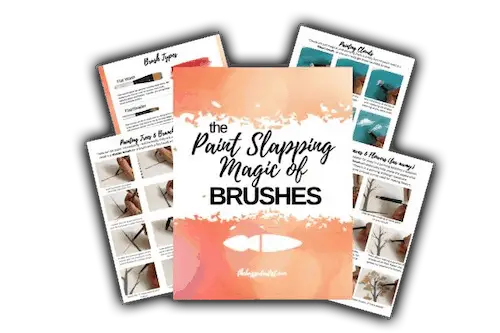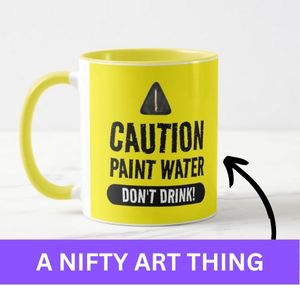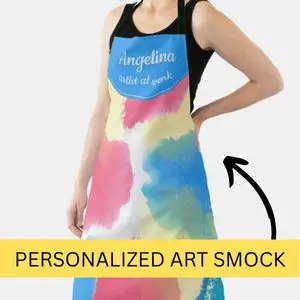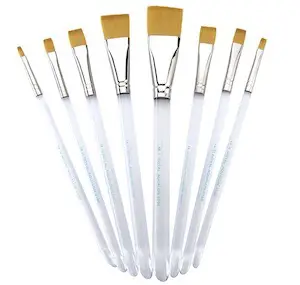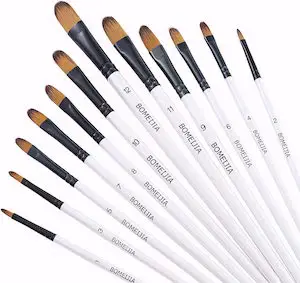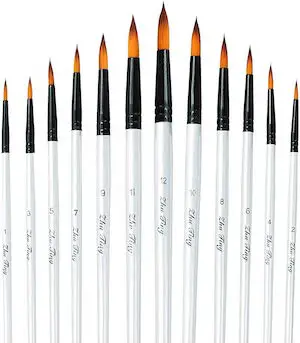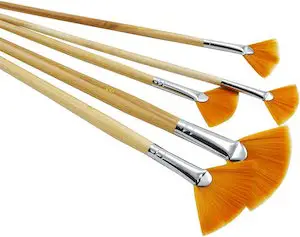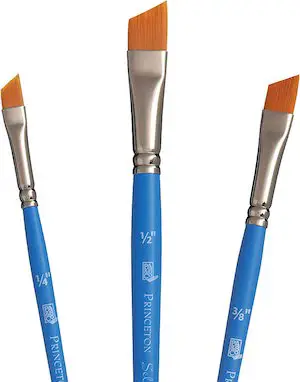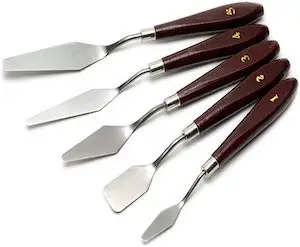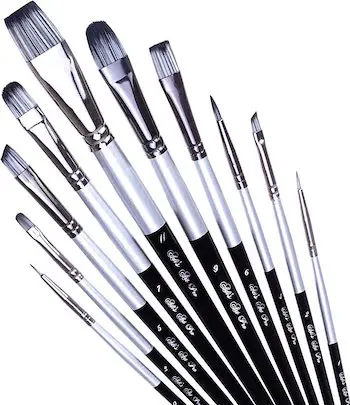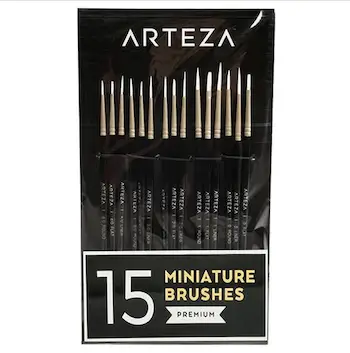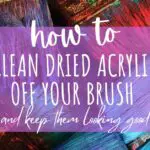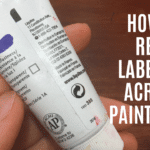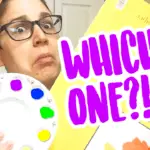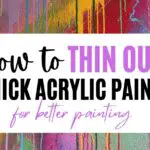Things you should know about acrylic brushes to use for every painting
Paint brushes are the conductors of your entire painting orchestral masterpiece. It directs paint, shows movement and give you specific textures and strokes.
They can turn regular globs of acrylic paint into a unique arrangement that can please the eye and tell a great story, all while withstanding the harsh surface friction of canvas.
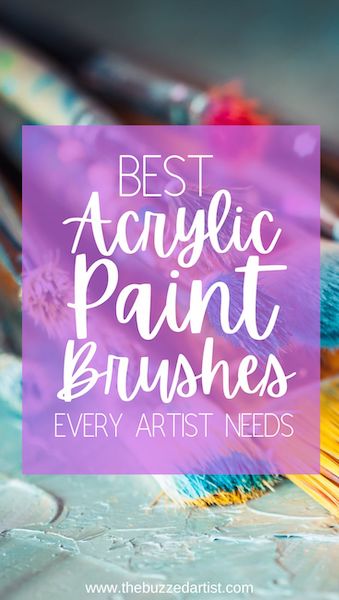
And whether this is your first time or up-teenth painting venture, your brush can make or break your painting, so understanding which ones you should use and what they can do to help you get an awesome painting is pretty important.
- Learn 80% of the brush strokes every acrylic painting has.
- Up-close detailed printable instructions on how to paint grass, trees, clouds & thin lines.
- Plus create a flood of painting ideas that get you itching (and really excited) to paint with The Artist Idea Blaster bonus
So in this post, I will share with you what the best brushes are, the different shapes they come in, and how you can use them to create your next great acrylic painting
Disclaimer: some links used in this post are affiliate links, which means I’ll earn a small commission if you purchase using my links at no extra cost to you. I only recommend products I think will be helpful to you and bring you one step closer to creating beautiful acrylic masterpieces!
In a rush? ⤵
👉 Here is our top recommended acrylic paint brush set every beginner painter needs
Synthetic Brushes All The Way
Now when it comes to choosing the right kind of brush for your acrylics, you’ll want to get ones that have synthetic bristles, since they provide a good deal of resistance or “spring-back” when painting. Try to avoid brushes with natural bristles since they tend to be a bit more expensive and are not very compatible with acrylics.
Let’s Talk Brush Anatomy
All acrylic paint brushes come in lots of different sizes and in order to understand what makes them amazing, we first need to understand the different brush components.
Brush Handle
Every brush has a handle and some are made with plastic or wood. I personally like plastic handles since it extends the brush’s lifetime, especially after lots of projects and cleaning.
In addition, some brushes comes with long handles or short handles, a good reason being so you can hold it at various points to achieve different looking strokes and vary the control of your brush as you do so.
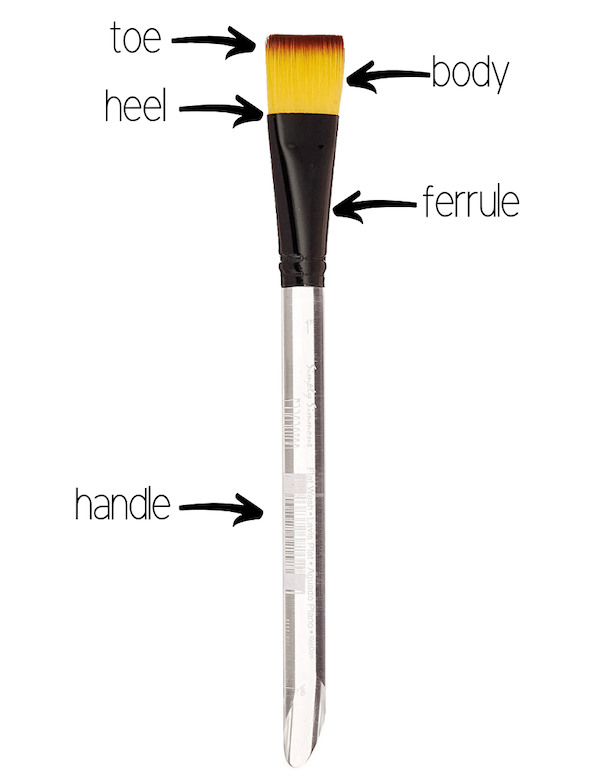
The way I handle my brushes (and teach in my tutorials) is kinda like this….
- Longer handles = Bigger strokes that don’t need to be precise
- Short handles = smaller more controlled strokes for creating details
But, at the end of the day, it all comes down to how it feels in your hand. Hold a few and decide which one feels the most comfortable.
Ferrule
This is the metallic part of the brush that holds all the brush bristles tightly together. It also determines the overall brush size and type.
Bristles
Bristles are considered the actual part of the brush you paint with. Bristles can be made from a variety of materials including animal hair (like hog hair) or synthetic fibers. Like I mentioned before, I lean towards synthetic fiber brush bristles as opposed to natural fibers.
Brush Toe
This is the end of the brush, which usually has a unique brush shape.
Brush Belly
The belly is the middle of the brush and where your paint usually sits while you are painting. When finding a brush, you will want to test out the brush “spring back”, which can help determine how well it can hold its shape and dispense paint.
Brush Heel
The brush heel is where the bristles go into the ferrule at the end of the handle.
More Acrylic Brush Posts You Might Like
Brush Types and Strokes
When painting with acrylics, you’ll encounter lots of brushes that create different effects, depending on the brush you choose.
There are different types of brushes for different techniques – almost like a thumbprint of sorts. And knowing what each brush can do will help you make a good choice during your painting session.
Flat Wash Brush
A flat wash brush has a wide flat brush head which is great for covering large areas with a lot of paint, making it perfect for backgrounds, applying glazes, and finishes. My favorite size to use is 3/4″.
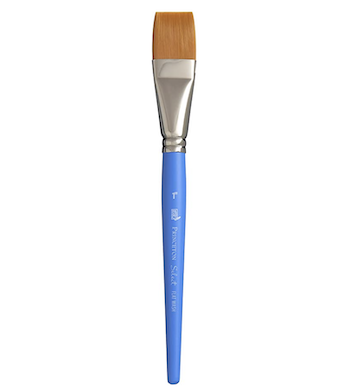
Flat/Shader Brush
A flat shader brush has a flat head that can be used on its side or tip for creating crisp edges and precision control. I like using flat brushes for blocking in color, shading, blending, highlighting, and creating small washes. My typical size I use is #10.
Filbert Brush
One of my personal favorites, a filbert brush has a rounded head shape which is great for creating soft, rounded brush strokes.
You can fill in circular areas with ease and use it for creating beautiful blends – I love painting hair and fur with filberts. My typical size I use is #10.
Round Brush
A round brush has a cylindrical ferrule and head that comes to a point – making it amazing for creating thick-to-thin strokes.
I love using round brushes for detail work or filling in smaller areas as well as creating shadows and unique line shapes. My typical size I use is #6.
Detail Round/Liner Brush
A detail round brush has a cylindrical ferrule and head and is my favorite for creating those detailed fine lines.
I like to thin out my paint to an inky consistency and pair that with my detail brushes for creating those fine details associated with grass, tree branches, and whiskers, just to name a few. Totally awesome for detailed work.
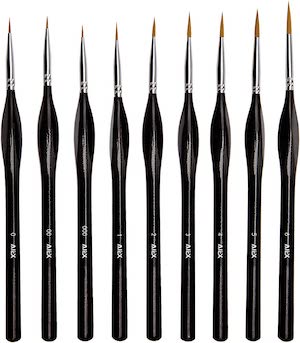
Fan Brush
A fan brush has a fan-like brush head that is great for creating grass or foliage texture, faster. Although I don’t personally use a fan brush, lots of landscape professional artists swear by them.
Angle Brush
An angle brush has a flat ferrule and the brush toe comes at an angle, giving you a great tip for finer details and other unique brush strokes to create leaves and foliage.
Palette Knives
Although it’s not a brush per se, palette knives are instrumental in creating gorgeous texture in your painting and can help apply lots of paint over larger areas of your canvas or painting surface.
This creates a gorgeous impasto texture that rivals that of an oil painting – but without the hours (or days) or drying time.
Brush Sizes
Every brush comes in different brush sizes – to suit the area you need to paint. Keep in mind these sizing conventions for common brush sizes:
- Flat Wash: Flat wash sizes correlate to the brush head width, common sizes go anywhere between 1/2″ to 1″.
- Shader, Filbert, and Round(from smallest to largest): #1-#12
- Liner and Detail Brushes (from largest to smallest): #1, #0, 2/0, 3/0, 4/0
Acrylic Brush Sets You Can Start With
After seeing all the different brush types out there, the next logical question you might have is….which ones should I start using?
Luckily, there are a good deal of acrylic brush sets available that cover a good deal of the brushes listed in this post for a very affordable price. I listed two of my personal favorites that include various sizes of flat, flat washes, filberts, and round brushes.
And if you’re looking to make incredible fine lines and detail work – which literally transforms my paintings into gorgeous art – I always recommend getting a set of detail brushes. They are a game-changer for your art and can save you time and headaches when painting super crisp lines and sharp points.
This detail brush set from Arteza is an excellent start for creating brush strokes that are fine and detailed. I cannot recommend these enough for taking your artwork to the next level.
So whether you are just starting out with acrylics or want to understand what each brush can do, good quality brushes can help you achieve different looks and textures in your paintings.
And like any tool, you’ll develop your personal preference and size you like. Once you’ve done a few paintings, you can further refine your brush collection by adding different sized brushes or different brush heads altogether. You just need to pick up a brush and start experimenting.
- Learn 80% of the brush strokes every acrylic painting has.
- Up-close detailed printable instructions on how to paint grass, trees, clouds & thin lines.
- Plus create a flood of painting ideas that get you itching (and really excited) to paint with The Artist Idea Blaster bonus
Best Acrylic Paint Brushes To Use With Every Painting

